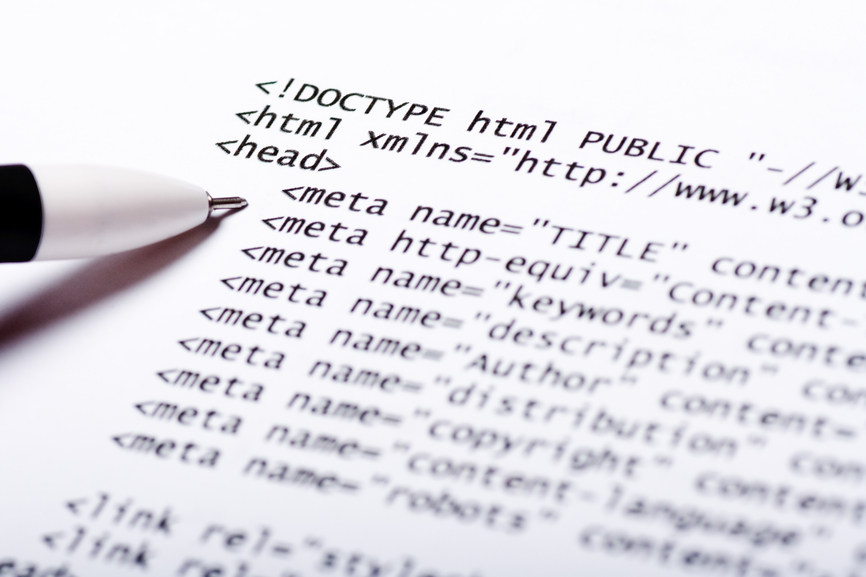This is the first in a series of articles discussing the defense of computer code copyright infringement cases. As I write this I am thinking about the many cases filed by serial plaintiff Live Face on Web, LLC also known as LFOW.
LFOW has made many enemies by suing small businesses all over the U.S. Numerous articles have appeared about these suits including even one against Howard Stern. There are even Twitter feeds and a Google+ page devoted to LFOW’s lawsuits.
I will be reviewing various aspects of the defense of these cases in this series. This first installment will discuss software copyright generally, and in particular what is and what is not protected by copyright.
Software is like a poem…or is it?
Copyright law protects software like a literary work: a novel, a short story, a screenplay, even a poem. But, as anyone who has ever written both code and poetry knows, sometimes code is poetry and sometimes it isn’t. Code does not have to be poetry to be protected, but it does have to be an original work of the author, and it has to be creative.
Software programs contain literal and non-literal elements. Literal elements are the source code itself. Non-literal elements are the structure, sequence, organization and displays inherent in the code. (Note: this is different from literal and non-literal copying. Very important not to confuse the two.)
Non-literal elements — elements dictated by function — are generally not copyrightable. Literal elements are generally copyrightable.
Oracle v. Google
One interesting example of a case that addressed the copyrightability of software is the Oracle v. Google case decided in 2014 by the Federal Circuit which ruled that Google committed copyright infringement when it copied Java into the Android operating system. To read the decision, click here.
Oracle claimed Google copied 7000 lines of “declaring source code,” the backbone of Java. Oracle also claimed Google copied the structure, sequence and organization of Java. The district court said that Java was not copyrightable. On appeal, the Federal Circuit considered the very low threshold of creativity required for copyright, and reversed.
The testimony at trial revealed that designing the Java API packages was a creative process and that the Sun/Oracle developers had a vast range of options for the structure and organization. In its copy- rightability decision, the district court specifically found that the API packages are both creative and original, and Google concedes on appeal that the originality require- ments are met. See Copyrightability Decision, 872 F. Supp. 2d at 976 (“The overall name tree, of course, has creative elements . . . .”); Id. at 999 (“Yes, it is creative. Yes, it is original.”); Appellee Br. 5 (“Google does not dispute” the district court’s finding that “the Java API clears the low originality threshold.”). The court found, however, that neither the declaring code nor the SSO was entitled to copyright protection under the Copyright Act.
The district court based its copyrightability decision on its conclusion that Oracle’s copyright in Java violated Section 102(b), the “idea-expression dichotomy.” The Federal Circuit disagreed.
To the contrary, however, Congress emphasized that Section 102(b) “in no way enlarges or contracts the scope of copyright protection” and that its “purpose is to restate . . . that the basic dichotomy be- tween expression and idea remains unchanged.” Feist, 499 U.S. at 356 (quoting H.R. Rep. No. 1476, 94th Cong., 2d Sess. 54, reprinted in 1976 U.S.C.C.A.N. 5659, 5670). “Section 102(b) does not extinguish the protection accorded a particular expression of an idea merely because that expression is embodied in a method of operation.” Mitel, Inc. v. Iqtel, Inc., 124 F.3d 1366, 1372 (10th Cir. 1997). Section 102(a) and 102(b) are to be considered collectively so that certain expressions are subject to greater scrutiny. Id. In assessing copyrightability, the district court is required to ferret out apparent expressive aspects of a work and then separate protectable expression from “unprotectable ideas, facts, processes, and methods of operation.” See Atari, 975 F.2d at 839.
The district court also concluded that the non-literal elements of Java were not copyrightable either under 17 U.S.C. 102(b) because they performed a function. The Federal Circuit determined that just because software code performs a function does not mean it is not expressive, and therefore copyrightable.
The Altai test for software.
The Federal Circuit’s decision was an endorsement of the “abstraction-filtration-comparison” test originally formulated by the Second Circuit in Computer Assocs. Int’l v. Altai, 982 F.2d 693, 704-05 (2d Cir. 1992) (“Altai”). Altai has been adopted by the majority of the circuits. When correctly applied, the Altai test helps courts make important decisions about what is protectable and what is not while preserving copyright in those elements that are truly results of the creative process.
To determine whether LFOW’s software is entitled to copyright protection will require the application of the Altai test. The Court will need to determine, with the assistance of experts, whether the software that LFOW claims to own contains enough creative literal elements to entitle it to copyright protection.



